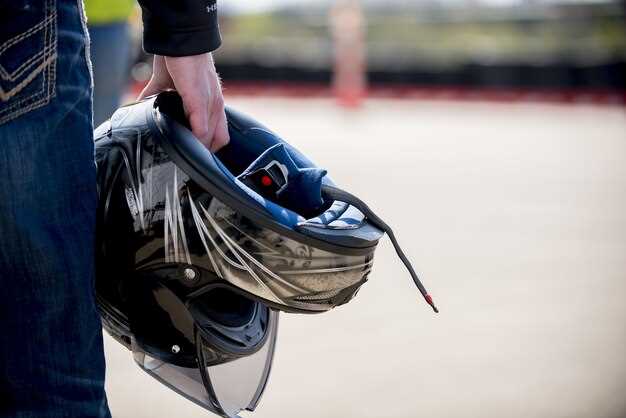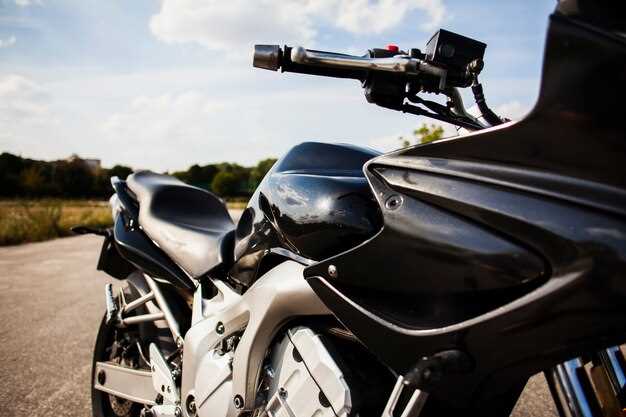
Motorcycling is not just about the thrill of the ride; it’s also about the freedom to travel and explore without limits. However, to fully enjoy long-distance journeys, having adequate storage is crucial. Whether you’re a weekend warrior or a full-time traveler, the right saddlebags and storage solutions can make all the difference in your riding experience.
In this article, we will delve into the various types of saddlebags and storage options available for motorcycles. From leather and textile bags to innovative modular systems, each option offers distinct advantages that cater to different riding styles and needs. Understanding these variations will enable you to make an informed decision tailored to your personal requirements.
We’ll also explore the key features to consider when selecting the perfect storage solution, such as capacity, durability, and ease of installation. With the right information at your fingertips, you’ll be better equipped to enhance your motorcycle adventures while ensuring you have everything you need on the road.
Choosing the Right Size Saddlebag for Your Bike
Selecting the appropriate saddlebag size for your motorcycle is crucial to ensure a perfect fit, optimal performance, and maximum storage capacity. The right saddlebag not only enhances the look of your bike but also provides functionalities tailored to your riding habits. Here are important considerations for determining the best size for your needs:
First, it is essential to consider the type of motorcycle you own. Different motorcycles have varying dimensions, which directly affect the saddlebag sizes you can accommodate. For instance, cruiser bikes typically have more space available than sportbikes. Furthermore, ensure that the saddlebag does not interfere with your riding posture or the overall balance of the bike.
Next, evaluate your storage requirements based on your riding style. If you often embark on long trips, a larger saddlebag that can hold essential gear, clothing, and personal items is recommended. Conversely, if you mainly ride for short distances or during city commutes, smaller bags might suffice. Refer to the following table that outlines common saddlebag sizes and their recommended uses:
| Saddlebag Size | Storage Capacity | Best For |
|---|---|---|
| Small (10-15 liters) | Roughly 2-3 days’ worth of items | City riding, short trips |
| Medium (15-30 liters) | Enough for a weekend getaway | Weekend trips, daily commuting |
| Large (30-50 liters) | Holds gear for extended trips | Long-distance touring, travel |
Lastly, consider your bike’s weight limitations. Exceeding the recommended load can affect your motorcycle’s handling and braking efficiency. Always check the manufacturer’s guidelines to know the optimal weight capacity to avoid compromising safety and performance.
Material Types and Their Impact on Durability
The choice of material for motorcycle saddlebags significantly influences their overall durability and lifespan. Two primary categories dominate the market: textile and leather, each with distinct properties impacting their resilience against wear and environmental factors.
Textile saddlebags, commonly made from nylon or polyester, offer a lightweight and water-resistant option. These synthetic materials often feature coatings that enhance their resistance to moisture, UV rays, and abrasions. High-denier fabrics provide additional strength, making them suitable for rugged use. However, prolonged exposure to harsh conditions can eventually degrade the textile fibers, leading to wear and tear.
Leather saddlebags, known for their classic appearance, typically offer superior durability and a timeless aesthetic. Full-grain leather, the highest quality available, is resistant to punctures and can withstand significant wear. Proper care, including regular conditioning and waterproofing treatments, can extend the life of leather bags. However, they may be more susceptible to damage from the elements if not properly maintained.
In addition to these primary materials, some manufacturers combine both textile and leather aspects to create hybrid models. These saddlebags aim to leverage the strengths of each material, providing a balance between durability and weight. Reinforced stitching and hardware add structural integrity, making these options viable for extended trips.
Ultimately, understanding the material composition is essential for selecting the right saddlebags. Riders should consider their typical riding conditions, the frequency of use, and maintenance capabilities when choosing a storage solution that will withstand the test of time.
Installation Tips for Easy Setup and Removal

Installing saddlebags and storage options on your motorcycle can enhance your riding experience significantly. To ensure a smooth setup and removal process, follow these practical tips.
First, read the manufacturer’s instructions thoroughly before starting the installation. Each product may have specific requirements that can streamline the process. Gather all necessary tools and components, including wrenches, screws, and any mounting brackets needed for your chosen saddlebags.
Next, position the saddlebags on the motorcycle to identify the best fit. Before securing them, make sure they do not obstruct any moving parts or interfere with your riding position. Balance is crucial; mount the bags evenly on both sides to maintain stability while cruising.
When mounting the bags, use a torque wrench to ensure that all bolts are tightened to the manufacturer’s specifications. Over-tightening can damage the mounting hardware or the bags themselves, while under-tightening may lead to detachment during rides.
Utilize quick-release mounting systems if available. These allow for easy removal and attachment of saddlebags without needing to unscrew and reattach each time. Familiarize yourself with how these mechanisms work to maximize their benefits.
Consider weatherproofing your bags, especially if you frequently ride in varied conditions. Using additional straps or waterproof liners can safeguard your belongings while on the road. Always check the seals and zippers after installation to ensure they function properly.
Lastly, practice removing and reinstalling the saddlebags at home. This familiarity will make the process feel seamless when you are out on the road. After a ride, inspect both the bags and the mounting points to ensure everything remains secure for future outings.
Comparing Hard vs. Soft Saddlebag Options
When it comes to motorcycle luggage, two primary types of saddlebags dominate the market: hard and soft options. Each of these has distinct advantages and disadvantages, making them suitable for different types of riders and their needs.
Hard saddlebags are typically made from durable materials such as fiberglass or ABS plastic. They offer superior protection for items inside due to their rigid construction. This rigidity provides excellent resistance against impacts and weather elements, ensuring your belongings remain safe and dry. Additionally, hard saddlebags often come with built-in locks, enhancing security against theft.
However, the weight of hard saddlebags can be a concern, as they are generally heavier than their soft counterparts. Installation is often more complex, requiring mounting brackets or specific vehicles designed to accommodate them. Furthermore, hard saddlebags may restrict aerodynamic performance due to their bulkier nature.
In contrast, soft saddlebags are typically constructed from materials like nylon or leather, making them lightweight and flexible. This flexibility allows for easier installation and removal, as they can often be strapped directly onto the bike without the need for additional hardware. Riders appreciate the versatility of soft bags, as they can compress to accommodate varying sizes of cargo.
Despite their advantages, soft saddlebags may lack the same level of protection as hard options. They are more susceptible to punctures, tears, and water penetration, especially if not properly treated for weather resistance. Additionally, security is a concern, as soft saddlebags can be easier to tamper with compared to hard options.
Ultimately, the choice between hard and soft saddlebags depends on individual preferences, riding habits, and intended use. Riders who prioritize security and weather resistance may lean towards hard saddlebags, while those who value lightweight and flexible options might prefer soft saddlebags. Understanding the specific needs of your motorcycle journey will guide you in selecting the right storage solution.
Essential Accessories to Maximize Storage Capacity
To enhance the storage capacity of your motorcycle, investing in the right accessories is crucial. These items not only provide additional space but also improve organization and accessibility. Here are some essential accessories to consider:
1. Luggage Racks: A sturdy luggage rack can significantly expand your motorcycle’s carrying capacity. Mounted on the rear, these racks can hold various items, making long trips more convenient. Look for racks tailored to your bike model for optimal fit and support.
2. Saddlebag Supports: If you’re using saddlebags, consider adding saddlebag supports. They prevent sagging and ensure that your bags maintain their shape under weight. This support also helps protect your bike’s frame from damage caused by heavy loads.
3. Rigid Action Packs: Rigid action packs can be attached to your motorcycle’s side or rear. Unlike soft bags, these packs offer durability and protection for more fragile items. They often come with built-in organizational features, such as dividers and pockets, making it easy to separate your gear.
4. Tank Bags: Tank bags provide convenient storage that is easily accessible while riding. They can hold essentials like maps, phones, or snacks, reducing the need to stop frequently. Look for models with magnetic bases for quick attachment and removal.
5. Cargo Nets and Bungee Cords: Cargo nets and bungee cords are inexpensive yet effective solutions for securing loose items on your bike. Whether you’re transporting a sleeping bag or groceries, these tools help keep your load stable and prevent items from shifting during your ride.
6. Backpack or Roll Bag: In addition to traditional motorcycle luggage, a sturdy backpack or roll bag can be helpful. These bags provide extra storage for essentials without compromising comfort. Look for designs that are lightweight and weather-resistant.
7. Pannier Bags: Pannier bags attach to either side of your motorcycle and can be a game-changer for storage. They maximize space while adding symmetry to your bike’s appearance. Ensure that these bags are designed specifically for your motorcycle to prevent any issues with balance or handling.
By integrating these accessories, riders can enhance their motorcycle’s storage capabilities significantly. Each option caters to different needs and types of travel, making it essential to choose based on your specific requirements.
Best Practices for Organizing Your Motorcycle Gear
Proper organization of your motorcycle gear can enhance your riding experience, ensuring you have everything you need at your fingertips while on the road. Here are some best practices to help you keep your gear tidy and accessible:
- Use Dedicated Storage Solutions: Invest in saddlebags, tank bags, or tail bags designed specifically for motorcycle gear. These options provide secure storage while maintaining the sleek profile of your bike.
- Sort Gear by Function: Organize your gear based on usage. Create separate sections for riding attire, tools, personal items, and emergency supplies. This helps in quickly locating what you need.
- Utilize Packing Cubes: Packing cubes can be incredibly useful for organizing smaller items such as gloves, socks, and first aid supplies. They allow you to keep everything compact and prevent unnecessary clutter.
- Secure Loose Items: Ensure all equipment, such as helmets, jackets, and gloves, has designated storage spots. Use helmet locks or attach straps within bags to keep these items securely in place during transport.
- Label Storage Compartments: If your luggage has multiple compartments, label them for easy identification. This simple practice saves time when you need to access specific items quickly.
- Regular Maintenance Checks: Periodically review your gear. Remove items you no longer need and ensure that everything is in good condition. This practice helps you keep only what is essential and functional.
- Keep Emergency Items Accessible: Store emergency tools and supplies in easily accessible locations, ideally in your saddlebag or attached to the bike. This ensures that you can quickly address issues on the road.
- Use Waterproof and Weather-Resistant Bags: To protect your gear from the elements, choose bags that are waterproof or come with rain covers. This will keep your essentials dry and safe, no matter the weather.
- Maintain a Checklist: Create a checklist of essential items you need for every ride. This can help you avoid forgetting crucial gear, especially during longer trips or multi-day adventures.
By implementing these best practices, you can ensure your motorcycle gear is well-organized and ready for use, enhancing your efficiency and enjoyment while riding.

